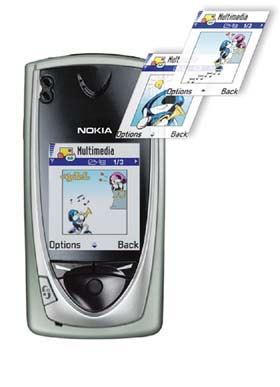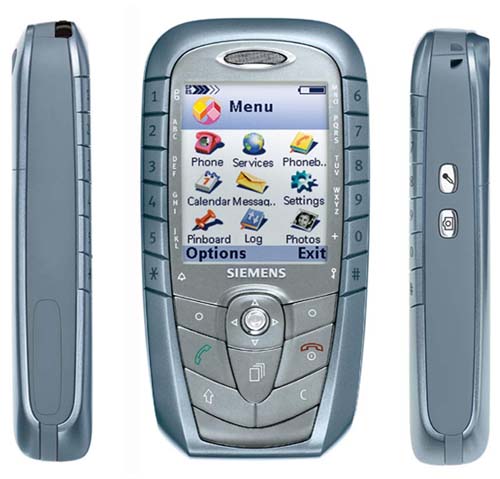|
|
Smartphones of the second generation or a death of classical business-phones
Word “smartphone” unites a class of devices, which have a large memory pool compared to usual phones. Among other additional features we can notice a various software, which is included in the standard delivery kit and a possibility to install many additional programs. Originally smarphones were targeted to business users. These groups of users is the most demanded to phone functions and could pay for them. Price of smartphones has been much higher than price of usual business-phones, but in the near future it would reduce. By the way, generally, mobile phones will cost less in the course of time. Smartphones will occupy a niche of modern business phones. The latter ones will be more available in terms of money but their sales share will reduce. Why do we think so? Now there are not more than 10 devices of this class, the most popular ones are Nokia 7650 and Sony Ericsson P800. A usual user doesn’t know anything about other devices, besides, sales of these smartphones are not large compared to usual phones. It is difficult to sell smartphones now because they are expensive and have lesser features than PDAs, though their dimensions and weight are comparable. Many prefer to use a separate pair - HPC and a phone, and think it is more convenient. Nevertheless, there is a group of users, who don’t think much about dimensions and who are appealed by smartphones capabilities. They can be potential buyers of new devices. Let’s look what will be a smartphone of the second and next generations and how this class of devices will develop.

It is common knowledge that such handsets as Nokia 7650 and Sony Ericsson P800 are smartphones of the first generations. Both products are based on Symbian, but of different versions. De facto, namely Symbian became a standard OS for these devices. Attempts made by Microsoft to promote their Microsoft Smartphone Edition OS were not successful. Probably the reason is that Microsoft has good contacts with computers manufactures, but this company is a beginner on mobile terminals market. Customers don’t want to pay for GSM/GPRS module built in PDA, because they already have a mobile phone, which has the same features. At the same time a customer chooses a smartphone, or rarely a PDA with the same functions, while purchasing a new mobile phone instead of the old one. It is a controversial question, which device to choose (smartphone or PDA with GSM/GPRS module), and the main answer on this question gives a psychology. Popularity of mobile phones brands is much higher than that of PDA makers. It is also worth to know that in response of sales PDAs won’t overtake mobile phones in the near future, although it is not so important in the frames of this article. Our target group (which we take in this article) can estimate seriously new devices, taking into account their innovations and probable prestige. For example, a presence of the integrated digital camera became a reason to buy the device. It is just an additional function, which is appropriate in this product. Iit is convenient to have it always at hand. The phone is always with you and there are more chances to forget PDA at home. It is used not so often as mobile phone. Customer pays attention to the price and convenience and here smartphones lose to PDA in memory pool, flexibility and productivity. A theme of PDA and smartphones comparative analyses is very deep; probably, it is a theme of the other article. Here we’ll tell only about smartphones.

Devices of the second generation have lesser dimensions compared with modern mobile phones. The main customer complaint concerning large size is solved. But simultaneously we have the problem of control keys spacing. There is almost no place for them. Device with PDA functions demands wide capabilities to input information. A compromise solution is to integrate touchscreens, which cause rise in price. Only Sony Ericsson decided to realize it yet. Products from Siemens and Nokia don’t have touchscreens, a standard keypad, the same as in usual phones, is used to input information. Siemens placed keys in the new smatphone (Siemens SX1) at the sides of the screen to spare the space. From position of ergonomics such spacing is not handy because both hands should be used to dial number or input a text. On the other hand, it allows engineers to save compact dimensions of the phone and reamin large size of the screen.

In the end of the year we’ll see a new wave of devices, where the question of spacing will be partly solved. These devices will be equipped with a touchscreen, for example, P200 from Sony Ericsson. These products would cost about 500 Euro what is similar to the first price of top phones. Smartphones have not only advanced features, but partly substitute PDA-fucntions. They enable to view documents from PC and even edit them. We can also say about other advantages of these devices but it is necessary to understand that smartphones offer the other quality of service. Of course, we don’t mean only integrated digital cameras. In the end of the year almost all usual mobile phones (90% of new models) except low-end handsets will be equipped with cameras. So, the name cameraphone, which some try to give this kind of device, is not logical as such class won’t exist. We don’t apply a word “musicphone” for the phone with integrated mp3 player, do we?. So, why should we give a new name to the phone, which has a camera?
I think that you have already understood the main trend of smartphones – engineers try to reduce dimensions and save mostly multimedia functions (integrated cameras, mp3, memory cards, games features). It’s interesting that some capabilities of usual phones are becoming similar to smartphones (Java, BREW applications). The main difference of smartphones today is a presence of own OS, which is standardized for this class of devices. In future a user will be able not only to download additional programs, but renew OS himself. The second important feature of this class of devices is a large screen, which allows comfortably work with documents. And at last, they have rather large memory, which can be used to save user’s data in contrast to usual phones.
Smartphones of the second generation differ not greatly from the usual phones in dimensions, and their prices are close to expensive business phones. That is why, in our opinion, many business users will prefer smartphones to usual phones. In the course of time the price of smartphones won’t considerably fall down in contrast to usual phones and they will remain high prestige devices. An advantage is multiply functionality of smartphones and extra capabilities. First, smartphones will be a substitution of only middle level phones. A demand for cheap models and top models will be the same. The latter ones will be popular, but their sales won’t be great, most likely, they will be comparable to smartphones. Business models of the middle level would be less in demand, they are mostly phones of the second market players.
In a year smartphones will press business phones. We think that sales of these phones will remain the same and won’t increase together with the market. In the future may be business phone would mean smartphone, classical business phones would be old-fashioned niche solution. According to our estimations, process of substitution would take about 4 years, the first step would be in 3Q of this year, when a new Symbian devices (Paragon II from Motorola, Sony Ericsson P200, products from Nokia, Sendo and other manufacturers) are available on the market. These devices will popularize class of smartphones and their advantages, but they won’t be too demanded because of high price. Only the next wave of these devices (presumably, in 2004) would overcome the barrier and stimulate sales, since these products would be not so expensive. We think that sales of smartphones and business phones would be equal in autumn 2004. Then, share of business phone will reduce to 20% (100% - sales of both business phones and smartphones). At that time such terms as business phone and smartphone will change considerably.
Smarphones will open an era of specialization. Devices would differ not only in capabilities. Their applications will be also different. Probably, we’ll have smartphones for doctors (as a diagnostics sensors); emergency specialists and others. Different devices would be created on the base of standard modules. They would remain personal communications but have many additional capabilities. But it is too early about all these things, surely they wouldn't apper in GSM networks.
Eldar Murtazin (eldar@mobile-review.com)
Translated by Maria Sennikova(maria@mobile-review.com)
Published — 26 February 2003
Have something to add?! Write us... eldar@mobile-review.com
|
News:
[ 31-07 16:21 ]Sir Jony Ive: Apple Isn't In It For The Money
[ 31-07 13:34 ]Video: Nokia Designer Interviews
[ 31-07 13:10 ]RIM To Layoff 3,000 More Employees
[ 30-07 20:59 ]Video: iPhone 5 Housing Shown Off
[ 30-07 19:12 ]Android Fortunes Decline In U.S.
[ 25-07 16:18 ]Why Apple Is Suing Samsung?
[ 25-07 15:53 ]A Few Choice Quotes About Apple ... By Samsung
[ 23-07 20:25 ]Russian iOS Hacker Calls It A Day
[ 23-07 17:40 ]Video: It's Still Not Out, But Galaxy Note 10.1 Gets An Ad
[ 19-07 19:10 ]Another Loss For Nokia: $1 Billion Down In Q2
[ 19-07 17:22 ]British Judge Orders Apple To Run Ads Saying Samsung Did Not Copy Them
[ 19-07 16:57 ]iPhone 5 To Feature Nano-SIM Cards
[ 18-07 14:20 ]What The iPad Could Have Looked Like ...
[ 18-07 13:25 ]App Store Hack Is Still Going Strong Despite Apple's Best Efforts
[ 13-07 12:34 ]Infographic: The (Hypothetical) Sale Of RIM
[ 13-07 11:10 ]Video: iPhone Hacker Makes In-App Purchases Free
[ 12-07 19:50 ]iPhone 5 Images Leak Again
[ 12-07 17:51 ]Android Takes 50%+ Of U.S. And Europe
[ 11-07 16:02 ]Apple Involved In 60% Of Patent Suits
[ 11-07 13:14 ]Video: Kindle Fire Gets A Jelly Bean
Subscribe
|


